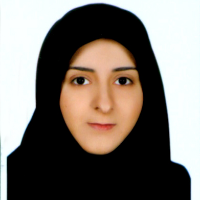The Explanation of the Frame in Traditional Persian Paintings and Its Innovation in the Artworks of Mahmoud Farshchian
“Frame” or Cadre is essentially one of the most important constituent elements of an artwork, and the artists have long paid attention to it in the visual arts of Iran; especially in post-Islamic arts. One of the most important topics in the visual arts is frame and its relation with the artwork or text, without which its components and elements will not be clearly defined. The frame can be the page and the area of the panel, the embedded illustrated image, the interior spaces, or in other words the specific areas within the image of an artwork. The frame actually creates the boundaries, and the various elements of the artwork are defined relative to the frame within the composition. Unless the frame defines the scope of the work, the elements that are embedded in it remain undefined relative to each other and also to the outside of the margin. The frame has an independent identity and has particular importance in Persian artworks in comparison with the arts of other countries. The evolution of frame can be analyzed throughout the history of book-making and painting until contemporary times. The frame is remarkable in its various forms and functions in the painting. The relationship between the shape of the frame and the theme of artwork, as well as the relationship between the text and the border, indicate the different capabilities and functions of the frame. Therefore frame and its relation to artwork are one of the most important issues in visual arts. In contemporary Persian painting, despite the independence of the artwork from the manuscripts, frame is still used in works and maintains its expressive and important role in visual art. Among contemporary artists, Mahmoud Farshchian has used the various forms of frame in different ways. It should be noted that Farshchian created a special style that while paying attention to the traditional authenticity of Persian painting, created a new language in Persian art. This article, that has been conducted using a descriptive-analytical method, tries to answer the following two questions: what are the characteristics of frame in traditional Persian painting? And what are the uses of the frame in the works of Farshchian and his innovations in this field? The purpose of the research is to identify and explain the position of frame in the works of traditional Persian painting and its continuation and innovation in the works of Farshchian. In this article, beside the fifteen specimens of the traditional Persian painting that have been chosen in order to explain the variety of frames and their characteristics, about thirty specimens from accessible artworks of all Mahmoud Farshchian’s printed works were selected and analyzed as statistical population, which represent the variety of frames and their different characteristics both in terms of traditional frame functions and their innovations. In conclusion, it has been recognized that frames appear in traditional Persian paintings, generally in the form of rectangular, vertical square or horizontal rectangles, circles, and polygons. Frames may be "closed" and "open" in association with the image. These two types of frames can also be "simple" or "ambulant". Also in reviewing Farshchian's numerous works, it is revealed that he has used both traditional and innovative methods in his works. On the one hand, with regard to the traditional way, he has used traditional open and broken frames, and on the other hand, has used the frame in an innovative way This article identifies four types of innovative ways that include: 1- The general shape of the frame display: This means using shapes such as rectangular frames with paper plates, oval, altar, Roman and composite frame formats. 2- The way of drawing frame: His works were examined in terms of two aspects: “frame layout" and "the way of creating frame through color separation" in order to distinguish inner and outer space for induction of the frame. 3- Making the frame ambulant: frames that are curved, torn, burned, clouded, or tailored in relation with the content and type of the frame are his innovations in the field. 4- Non- frame works: rarely used in traditional painting and after Hossein Behzad, however there is a great deal of this kind of frame in his works. Also regarding the relationship between the frame and the theme of the painting in Farshchian's works, it should be noted that the frame is an excuse to complete the image and is often in relation with the artist's intended theme. Another function of the frame in his works relates to the role of the frame in creating the border and communicating the border with the text. In his work, the marginal elements contribute to the text as well as the main theme of the work, directly or indirectly through the representation of different worlds and times, and also the presentation of the content within the margin.
Frame , Persian painting , Farshchian , Iran , Contemporary
- حق عضویت دریافتی صرف حمایت از نشریات عضو و نگهداری، تکمیل و توسعه مگیران میشود.
- پرداخت حق اشتراک و دانلود مقالات اجازه بازنشر آن در سایر رسانههای چاپی و دیجیتال را به کاربر نمیدهد.



